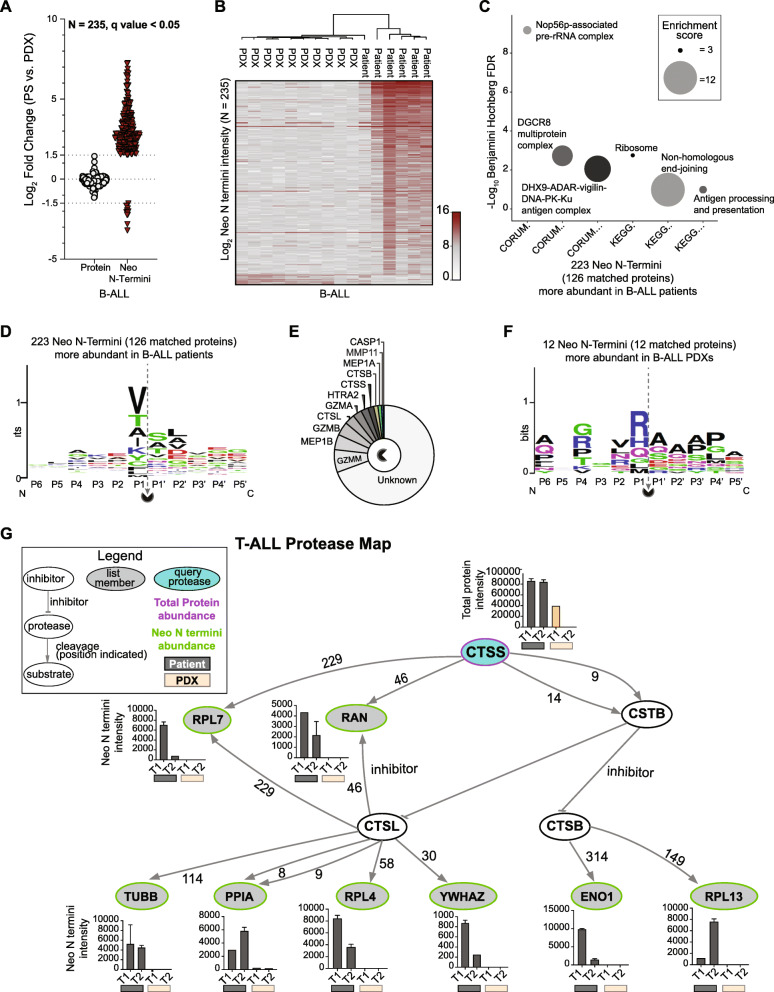Fig. 6.
Neo N-terminal PTMs show differences in B-ALL patients and PDXs that are absent at protein level. a Proteins (N = 235) that remained stable between B-ALL patients and PDXs (Log2 fold change < ±1.5) but differed in neo N termini abundance in xenografts and patients (Log2 fold change >±1.5, unpaired two-tailed Student’s t-test, FDR < 0.05). b Log2 abundance plot of 235 differentially regulated neo N termini in patients and corresponding PDXs. c Enriched pathway (KEGG) and protein complexes (CORUM) mapped to protein-matched upregulated neo N termini (N = 126 proteins from 223 neo N termini). Circle size represents the enrichment score of the category term. d Sequence pattern detected for 223 neo N termini enriched in B-ALL patients. e Curated proteases with cleavage sites associated with the sequence patterns identified in 223 neo N termini. f Sequence pattern detected for 12 neo N termini enriched in B-ALL xenografts. g Protease web plot of CTSS interaction network. CTSS (query protease, purple border) mean protein abundance, and Neo N termini mean abundance for list members (proteins with neo N termini in query list, green border) (N =198) are plotted in bar graphs. Graphs show intensity of neo N termini quantified in patients (grey bars) and in PDXs (orange bars). Error bars indicate the standard deviation from the mean for replicate DIA-mass spectrometry measurements. The amino acid following the protease N terminal cleavage site (amino acid P1’) is specified for each protease-substrate path

